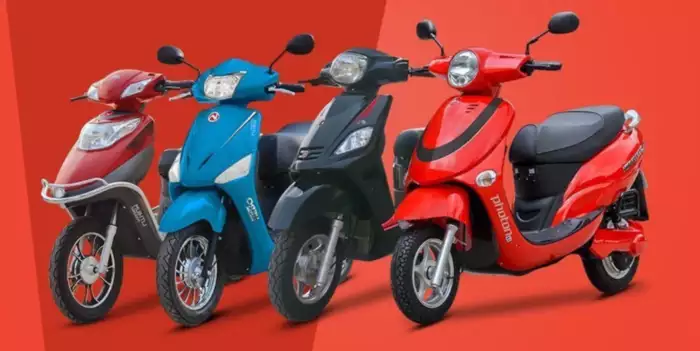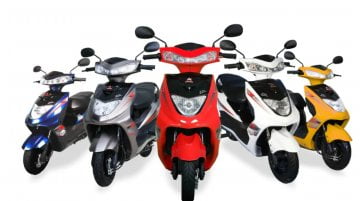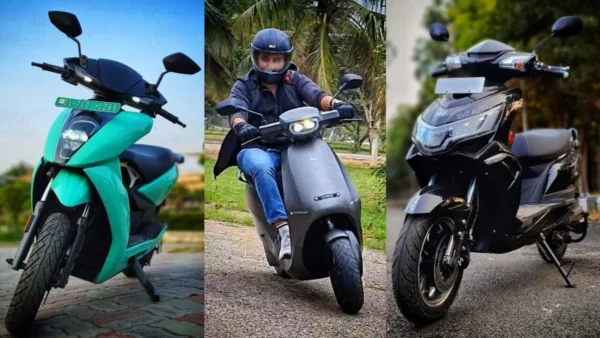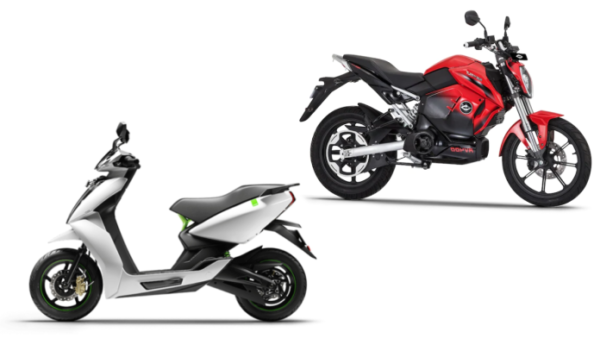Will India’s market for electric two-wheelers continue to grow?

Will India’s market for electric two-wheelers continue to grow?
As we are all aware, two-wheelers make up a sizeable portion of the Indian motor vehicle ecosystem and are a necessary form of transportation in some areas. Although two-wheelers have been present since the early 20th century, millions of Indians have only recently begun incorporating them into their daily lives.
There are now a wider variety of two-wheelers in India, including scooters, motorcycles, mopeds, and motorcycles that are mostly fuel-powered. However, there is a small but rapidly expanding market for electric two-wheelers, or “e-two-wheelers.”
These are becoming more popular and have been in the news because of their apparent advantages. How long, though, will these e-two-wheeler businesses last? So, it stands to reason that every prospective buyer must consider this question before making a purchase.
But India has now made it clear that by 2030, they want no less than 7 million EVs on their highways. This looks like a difficult task, and India will have to work hard to make it happen. Let’s check out what Indian Electric Two-Wheeler Industry looks like and is it able to survive.

Pioneer of Electric Two Wheeler in India
Although the market for electric two-wheelers has been slowly expanding over the past few years, it is still relatively small. Since a firm named Ather Energy unveiled the first electric scooter in 2013, there has been no turning back.
In 2016, the company sold 1,000 units of its Thunderbird model, and over 3,000 units of this model were produced in 2017. In the upcoming years, the company also intends to introduce and sell about 100,000 units of electric motorcycles. Other brands have also started producing electric two-wheelers in India.
In India, the market for electric two-wheelers is still in its infancy. The government recently unveiled a plan to convert all automobiles to electric propulsion by 2030.
Support by the Government
The two-wheeled electric vehicle market has long been the focus of discussion. The primary cause of this is the desire to limit pollution, which is increasing. The transition to electric cars is a positive development. However, choosing which vehicle to purchase requires considering several different variables.
As part of its “Make in India” strategy, the Indian government has stated that it will invest $60 billion in the development of electric vehicles by 2025. Sales are anticipated to increase by 50% over the following five years as a result.
Since introducing electric two-wheelers to the market in 2013, when just 1,000 units were sold, the number of units sold each month has constantly climbed. Still, this figure has now climbed to over 20,000 units per month, according to recent reports published by SIAM (Society of Indian Automobile Manufacturers).
The Indian government vigorously promotes using electric vehicles (EVs) to cut pollution and promote green energy. By 2030, it hopes to reach its goal of entirely electric transportation. The government has also proposed many incentives, including improved EV infrastructure and reduced GST.
In India, the market is still in its infancy, and e-commerce giants like Flipkart, Amazon, etc., are primarily responsible for the demand for electric two-wheelers. Due to inadequate infrastructure, a lack of consumer knowledge, high costs, and a preference for traditional bikes over electric bikes, demand for electric vehicles have grown slowly.

Advantages of using Electric Bikes and Scooters
With increasingly powerful and efficient electric vehicles being released each year, the electric vehicle industry is gradually revolutionizing the automotive industry. Electric bikes and scooters have many benefits and drawbacks, but the positives exceed the drawbacks.
• Ecologically responsible
Electric two-wheelers are environmentally friendly and are the main selling point for them among the benefits and drawbacks of electric bikes. They reduce air pollution because they don’t emit smoke or burn fossil fuels. This, however, is in question because the electricity needed to charge these scooters will primarily be generated by burning coal, which is the nation’s main source of electricity. This might not be the most environmentally beneficial option unless the government develops cleaner sources of electricity.
Nevertheless, compared to fuel-powered vehicles, electric cars are much more environmentally friendly.
• Lower Operating Cost
While the upfront cost of electric motorcycles and scooters is slightly more than that of standard two-wheelers, the money you will save on fuel over time makes this a very cost-effective decision. More and more individuals are switching to electric vehicles due to their cheaper operating expenses due to rising fuel prices.
• Maintenance
The absence of complicated machinery is one of the key benefits of electric scooters when weighing their benefits and drawbacks. As a result, compared to traditional vehicles, electric bikes have substantially cheaper maintenance costs.
• Storage Space
Since electric scooters have fewer moving parts than conventional bikes and scooters, so they feature a vast storage area that can carry a range of items.
• Low Noise
When being driven, most cars make a lot of noise. You can hear numerous automobiles making noise when you step outside into a busy street. Electric bikes also generate very little noise, which is one of their many benefits.
• Lightweight
Electric scooters are less complicated and have fewer moving parts. They are hence small and convenient to park. Since driving a heavier vehicle is more challenging, the car’s small weight also makes driving easier for the driver. Among the advantages and disadvantages of e-bikes, the lightweight design and small size allow you to store your scooter indoors when it’s raining.

Growth of Electric Two-Wheeler Companies in India
In the Indian market, electric two-wheelers are becoming more popular. Several businesses have entered the electric two-wheeler market in the past two years. These companies include TVS Motor Company, Zoomcar, Ola Electric, Hero Electric, and Ather Energy.
Some of these businesses have already introduced their products, while others will do so soon. Since there is more market competition, consumers will benefit from better products at reduced costs. Before these businesses can become lucrative, there are still a few obstacles they must overcome.
What Is Propelling the Growth of Electric Two-Wheelers?
In India, electric two-wheelers are still a relatively new idea. The concept is not new, though, as electric scooters and bikes have been popular in China for a while. Due to traffic congestion and pollution levels, Indian cities have seen an increase in the number of people using public transportation, which has resulted in an increase in the use of electric vehicles.
There is a greater need than ever to find a substitute for traditional transportation. Over the past few months, a significant increase in the number of people choosing electric two-wheelers as their primary mode of transport has been seen, particularly since the Delhi government announced its intention to purchase 10,000 battery-powered bikes from BSF for use by its security personnel.
The major factors driving this growth are:
- Increase in disposable income
- Government support and subsidies
- Increasing awareness about pollution and climate change.

What Is Restricting the Growth of the Electric Two-Wheelers?
In India, electric two-wheelers are becoming more and more popular. In India, the electric two-wheeler market is predicted to develop at a healthy rate and reach USD 3 billion by 2025. However, a few problems are limiting the industry’s expansion in India:
-
High Manufacturing Cost
Due to the usage of pricey lithium-ion batteries and other electronic components, an electric two-wheeler has a higher production cost than a traditional bike. A typical motorbike costs between USD 500 and USD 600 to produce, whereas an electric scooter or bike costs roughly USD 1,600.
According to experts, if the price of the raw materials required to manufacture electric motorcycles decreases, it will drastically lower the cost of production as a whole.
-
Limited Availability of Charging Infrastructure
There aren’t enough charging stations in India for electric two-wheelers, which will limit their expansion over the next several years unless manufacturers and government organizations invest a lot of money in constructing charging infrastructure throughout India’s cities and towns.
Users may find it challenging to charge their batteries while travelling between cities or towns in India because there are only 1,000 charging points nationwide as of December 2018, which equates to one charging point every 100 kilometres.
-
Low Battery Life
Another issue this industry faces is that its batteries do not last long enough before recharging; frequently, they only last 10 kilometres or less.

The Hype Surrounding the Two-Wheeler Industry
The sector is shrouded in hype, more than just a marketing ploy. The government has extensively promoted the adoption of electric vehicles in India. The government is confident that if many commuters use these vehicles, pollution will be decreased. Lowering fuel imports and enhancing job creation also anticipates economic gains.
The government has established incentives for such purchases to persuade individuals to switch. For instance, Section 80EE of the Income Tax Act provides buyers with an extra income tax deduction.
This entitles them to a deduction of Rs. 1 lakh for an electric vehicle and Rs. 50,000 for a scooter or motorcycle powered by electricity. Thus, you can deduct up to Rs 50,000 from your taxable income for each new two-wheeler you acquire after March 31st, 2022; this is double the amount you could deduct in FY2020-2021. This is applicable if you paid more than Rs 2 lakh for it.

Future Trends of the Two-Wheeler Industry
The market for electric two-wheelers is expanding quickly. Many businesses are attempting to develop novel goods and services. Future predictions for the electric two-wheeler market indicate that it will expand and gain popularity.
The following are some of the trends that can be expected in the next few years:
-
Increase in the Number of Electric Bikes
In the upcoming years, there will be an increase in the number of electric bikes and scooters as more people get interested in them for various reasons, including the desire to save money on gasoline and lessen pollution.
-
Electric scooters or bikes will become more popular among commuters.
One of the main reasons people choose electric scooters instead of cars or public transit is for commuting. When they commute on an electric bike, they do not have to worry about snarling traffic or having trouble finding a parking spot.
-
Increasing R&D Investments
Major players around the world are pouring millions of dollars into R&D projects to create new technologies and advance those already in use. For instance, since 1984, Shimano Inc., a business with headquarters in Japan, has concentrated on developing innovative products, including electronic shifting mechanisms, road cycles, and mountain bikes. In 1988, it also purchased Cannondale Bicycle Corporation, giving it the chance to further solidify its position as a key player in the biking sector.
Following are the Steps That Should Be Taken to Sustain the Growth of the Two-Wheeler Industry
The two-wheeler market in India has been growing at a healthy rate of about 20% per year. Urbanization growth and rising disposable income have fostered this expansion. The demand for two-wheelers is also being driven by a greater preference for owning a car. If we do not take some action right away, this growth might not be long-term sustainable.
The first step would be to improve the infrastructure of roads, highways, and other modes of transportation in India. This will greatly enhance the flow of people and products between cities and states, creating millions of new jobs.
The second step would be to foster an atmosphere that is supportive of innovation and R&D. This would guarantee the creation of new technology that will aid in lowering pollution levels in our cities and towns.
Thirdly, We must promote the usage of electric cars (EVs), as they can significantly lower the amount of pollution in our cities and towns and the cost of maintaining transportation infrastructure compared to conventional internal combustion engine vehicles (ICEVs).
Conclusion
India should concentrate its efforts on establishing a reliable electric two-wheeler manufacturing base.
There is an excellent opportunity for the electric two-wheeler market to expand in India. The government must support the market by lowering tariffs and providing incentives to suppliers and makers of electric two-wheelers. As a result, producers will be forced to compete more fiercely, and consumers will have greater access to parts. As the cost of building the infrastructure necessary to support electric two-wheeled vehicles (such as charging stations, additional electricity supply, etc.) would substantially impact demand for such vehicles, the government should pay particular attention to minimizing these costs.
With the opening of new production facilities, the switch away from fossil fuels will happen swiftly. One day, very soon, individuals in India and all across the world will have the easy option of switching to an electric bike or vehicle.
Edited by Prakriti Arora








